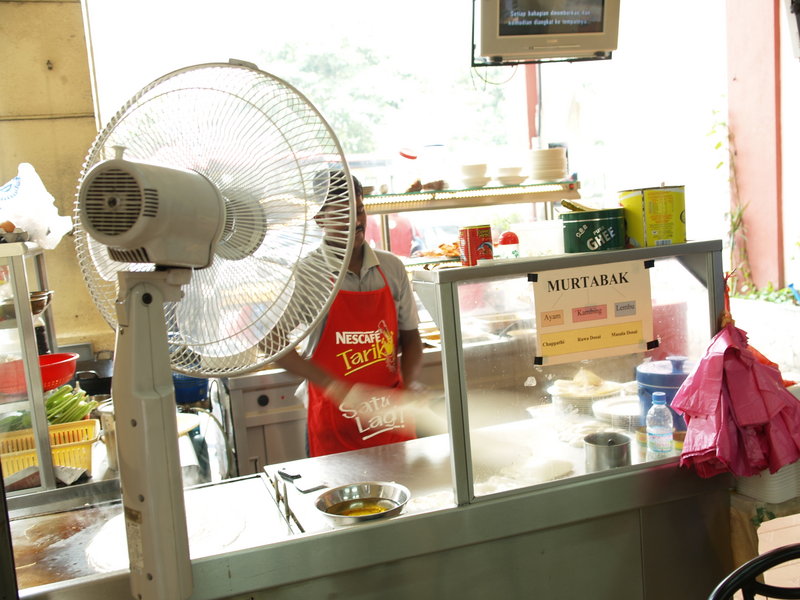Roti Canai [5/5]
My favourite breakfast is Roti Canai. They are also called Roti Prata in Singapore, or Murtabak Kosong in Brunei. Murtabak in Malaysia is a Roti Canai filled with something, and "kosong" in this context means "empty"or "nothing", so a Murtabak Kosong is actually a Roti Canai filled with nothing. I.e., the combination of the Murtabak operator and the Kosong operator yield the identity transformation on Roti Canai. Originally, Roti Canai is an Indian dish, and in India they are called "Prata" as well. ("Roti" is the Hindi and Malay word for bread.)
Actually I lived in Malaysia for almost a year before I had Roti Canai for the first time. Unbelievable. I went for a diving weekend on Tenggol with my friends, and we arrived friday night in Kuala Besut. The next morning, Zul, the dive operator, would assemble his troupe and lead us to a little restaurant near the harbour, where he ordered stacks of Roti Canai and Malaysian coffee while his boatmen prepared the boat. This was one of the best breakfasts I ever had, and it's one of the things from Malaysia that I miss most. Everytime I'm back to Malaysia, the first thing I do on the first morning is to go to some outdoor Roti shop and have some Roti and a Malaysian coffee.
I tried to make some Roti Canai at home, but didn't succeed. One problem may be the consistency of the dough: in my temperate kitchen, it is considerably harder than in an outdoor stall in the tropics. But I think the real art is in the whirling technique. The roti man takes a doughball, flattens it, and then whirls it through the air several times to make a thin sheet. He greases the sheet with ghee, folds it back inwards, and repeats the procedure two or three times. The result looks like a pancake and is fried, and like a puff pastry, it is supposed to ... well ... puff. Rotis are then served with Indian curry gravy.
You can also buy ready made Roti Prata in Asian shops, but it's not the same.
This page has been created on Sunday 12. April 2015 from galleries.xml using galleries.xsl.





